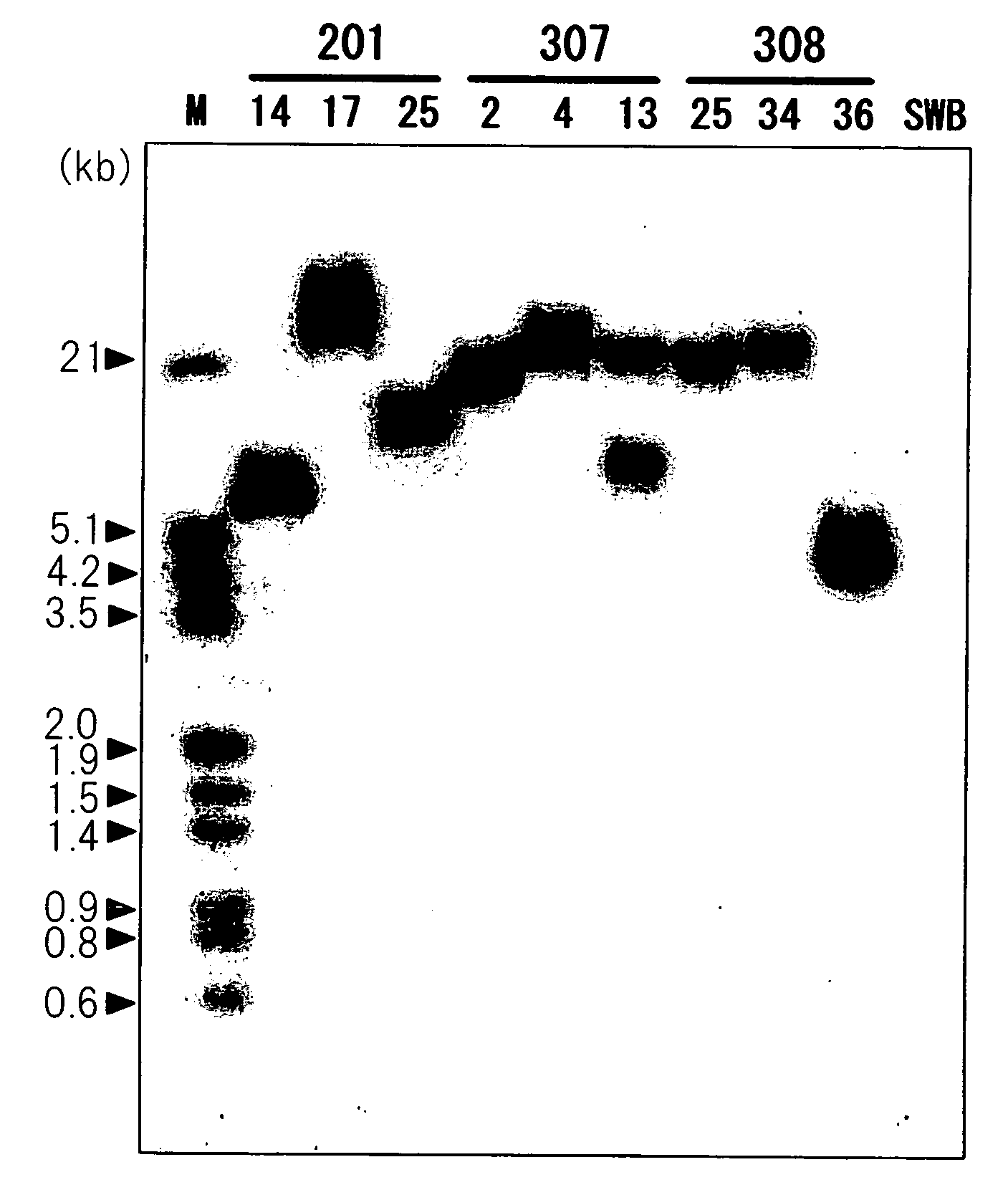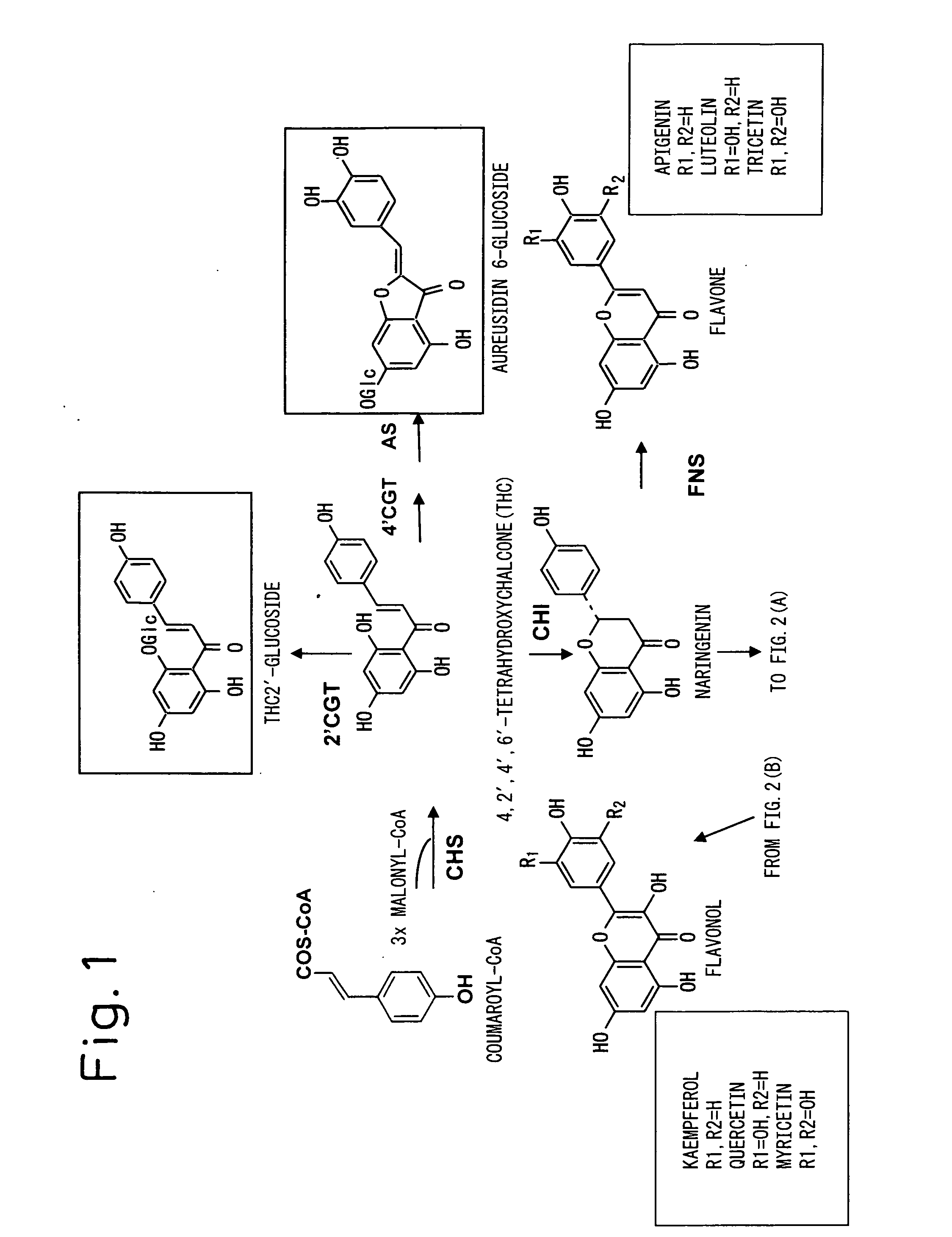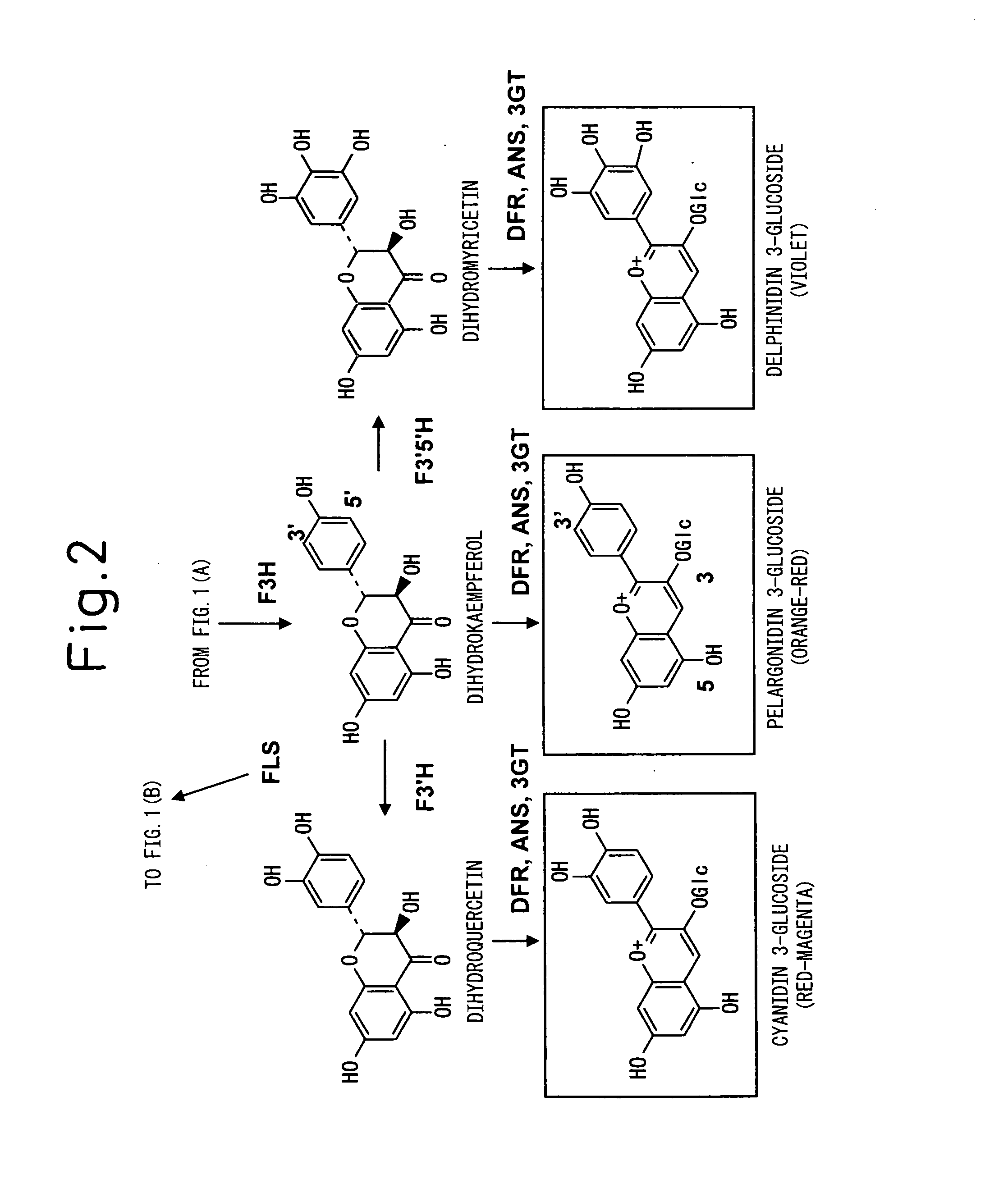Method for Producing Yellow Flower by Controlling Flavonoid Synthetic Pathway
a flavonoid and synthetic pathway technology, applied in the field of yellow flower production by controlling the flavonoid synthetic pathway, can solve the problems of inability to create an industrially useful yellow flower, high thc, and inability to hybridize and breed a target variety, so as to inhibit the expression of the flavonoid synthesis pathway gene, inhibit the expression of the dihydroflavonol, and inhibit the effect of expression
- Summary
- Abstract
- Description
- Claims
- Application Information
AI Technical Summary
Benefits of technology
Problems solved by technology
Method used
Image
Examples
example 1
Construction of Yellow Antirrhinum majus Flower Petal cDNA Library
[0081]A cDNA library was constructed as described in the literature (Science 290, 1163 (2000)), from 5 g of fresh flower petals of the yellow Antirrhinum majus variety Butterfly Yellow. The obtained library consisted of 1.6×105 plaque forming units.
example 2
4′CGT Gene Screening 1
[0082]Previously disclosed GT amino acid sequences were compared, and nucleotide sequences corresponding to the conserved regions of the amino acid sequences were amplified and used as probes for screening of the Antirrhinum majus cDNA library described in Example 1.
[0083]Five GTs were used as the probes, namely the sequences for morning glory-derived UDP-glucose:anthocyanidin 3-glucoside glucosyltransferase (3GGT) (Japanese Unexamined Patent Publication No. 2003-289884), petunia-derived 3GT (Plant Mol. Biol. 48, 401, (2002)), verbena-derived 5GT (J. Biol. Chem. 274, 7405 (1999)), Scutellaria baicalensis-derived GT (SBGT, Planta 210, 1006 (2000)) and gentian-derived UDP-glucose:anthocyanin 3′-glucosyltransferase (3′GT) (Plant Physiol. 132, 1652, (2003)). One oligonucleotide pair was synthesized for each GT to allow amplification of the conserved region sequence. The oligonucleotide sequences are listed as SEQ ID NO: 3-12.
Morning glory 3GGTSEQ ID NO: 3:5′-GAA AT...
example 3
Assay of Chalcone GT Activity Using E. coli
3-1 Construction of E. coli Expression Vector and Expression of GT in E. coli
[0086]The activity of GT encoded by the ten cDNAs obtained in Example 2 was analyzed using an E. coli expression system. First, E. coli expression constructs were prepared for each cDNA. An NcoI site was introduced by PCR so as to be situated on the nucleotide sequence ATG believed to be the start codon for each cDNA, and the region from the start methionine to the end codon was linked to the NcoI and KpnI or NcoI and EcoRV sites of the E. coli expression vector pQE61 (QIAGEN).
[0087]The PCR solution (25 μl) for introduction of the NcoI site situated on the start methionine comprised each GT cDNA as template, 0.2 pmol / μl each of primer containing the NcoI recognition site situated on the start methionine position and primer from the 3′ end to the 5′ end near the stop codon, 1× ExTaq buffer (Takara), 0.2 mM dNTPs and 1.25 U ExTaq polymerase. Reaction was conducted ...
PUM
| Property | Measurement | Unit |
|---|---|---|
| concentration | aaaaa | aaaaa |
| concentration | aaaaa | aaaaa |
| pH | aaaaa | aaaaa |
Abstract
Description
Claims
Application Information
 Login to View More
Login to View More - R&D
- Intellectual Property
- Life Sciences
- Materials
- Tech Scout
- Unparalleled Data Quality
- Higher Quality Content
- 60% Fewer Hallucinations
Browse by: Latest US Patents, China's latest patents, Technical Efficacy Thesaurus, Application Domain, Technology Topic, Popular Technical Reports.
© 2025 PatSnap. All rights reserved.Legal|Privacy policy|Modern Slavery Act Transparency Statement|Sitemap|About US| Contact US: help@patsnap.com



